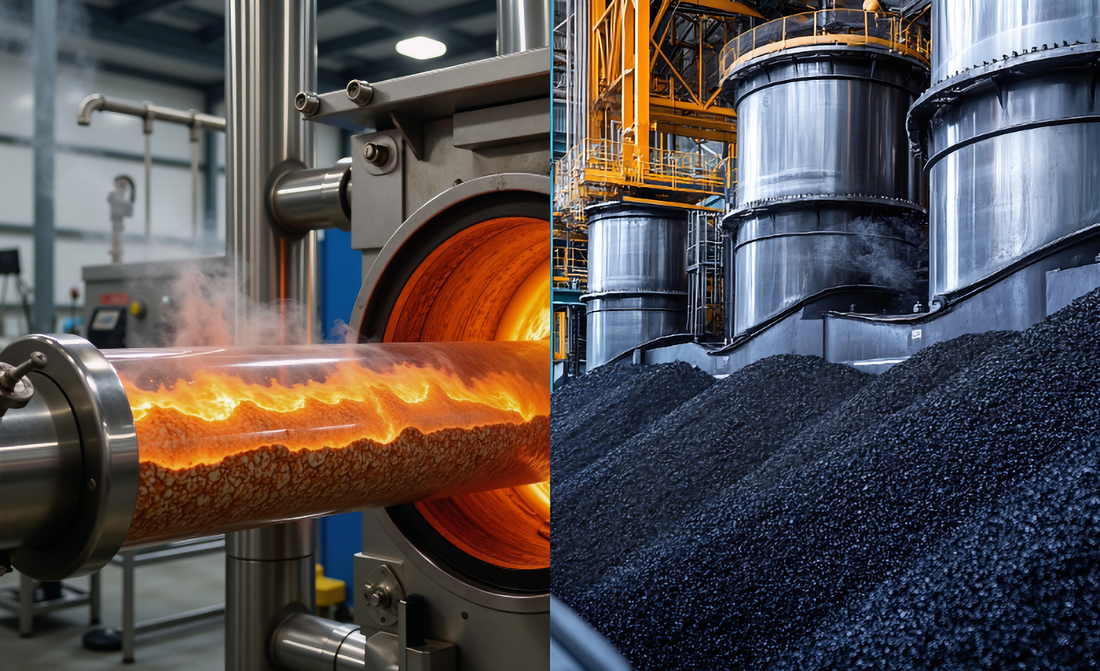
Biochar: An Overview of Technologies and Applications
Share
Biochar is a carbon-rich material produced by the thermal decomposition of biomass, such as agricultural and forestry waste. Its physicochemical properties depend on the feedstocks and techniques used during production. Typically, it can be produced through pyrolysis, gasification, or hydrothermal carbonization. Biochar can be used for soil amendment, carbon sequestration, construction materials, livestock waste management, renewable energy generation, water and air purification, and as a catalyst and activator. It also has applications in animal husbandry, composting, bio-fertilizers, thermoplastics, biofilters, and environmental remediation. In this article, we discuss the technologies used in biochar production and their applications, based on our global database of biochar companies.
Feedstocks for Biochar
Several feedstocks can be used for biochar production. The most common feedstocks include agricultural and forestry waste, such as rice, corn, fruit pits, leaf litter, and waste wood. In addition to agricultural and forestry waste, animal waste or manure can also be utilized to produce biochar. Other common feedstocks include kitchen waste, sewage sludge, compost, or green waste.
Technology for Biochar Production
Several technologies are utilized for biochar production, including:
- Pyrolysis
- Gasification
- Torrefaction
- Hydrothermal carbonization
Pyrolysis is the most common method for producing biochar. It is a non-oxidative thermal breakdown process usually carried out at 300–900 °C. It produces three valuable products: biochar, bio-oil, and syngas. Based on temperature, heating rate, and contact time, pyrolysis can be categorized into slow and fast processes. Slow pyrolysis produces high-yield biochar that can be used for soil amendment. In contrast, fast pyrolysis is more suitable for bio-oil production.
Gasification is a thermochemical process that breaks down carbon-rich materials into syngas, with char produced as a by-product. The biochar produced through this process has high porosity and surface area, making it more suitable for applications where these properties are beneficial, such as in concrete as a lightweight aggregate. The main limitations of this process are the low production of biochar and the emissions of greenhouse gases (GHG).
Torrefaction is a pre-treatment process generally used to remove moisture from biomass and densify it, lowering the cost of mobilization and increasing its durability. During torrefaction, biomass is gradually heated at a moderate temperature (200-300 °C) to eliminate moisture, which makes it more hydrophobic and easier to biodegrade compared to unmodified biomass.
Hydrothermal carbonization is a process where wet biomass is converted into biofuel at relatively low temperatures (200–350 °C) and high pressure. This method is especially effective for treating biomass with high moisture content, such as food waste or sewage sludge. The biochar produced through this process is called hydrochar.
Application of Biochar
Biochar can be used in numerous applications, including:
- Soil amendment
- Carbon sequestration
- Construction materials
- Livestock waste management
- Renewable energy production
- Water and air purification
- Animal husbandry
- Composting
- Bio-fertilizers
- Thermoplastics
- Biofilters
The most widely used application of biochar is as a soil amendment and for carbon sequestration. Its porous structure makes it an excellent source for water retention and nutrient availability for the soil. Biochar’s unique properties also allow it to be a helpful additive in various construction materials, including cement, asphalt, and polymers. Its large surface area, porosity, and adsorption tendencies allow toxic substances to aggregate on its surface, making it an excellent material for wastewater treatment. Biochar can also be used in animal feed and husbandry. Adding biochar to the animal diet may provide some key benefits, including improved digestion, enhanced immunity, higher feed intake, increased growth rate, and reduced methane emissions. Biochar can also be used for other applications such as a catalyst, energy storage, renewable energy production, composting, thermoplastics, and biofilters.
Summary
In summary, the most common method of producing biochar is pyrolysis. Biochar's primary uses include soil amendment, construction materials, renewable energy generation, wastewater treatment, biofertilizers, and animal husbandry. Overall, biochar supports a circular economy by offering a sustainable solution for waste management, long-term carbon storage, and environmental protection from harmful emissions.
